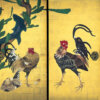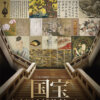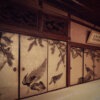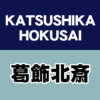Tenjukoku Shūchō (Tenjukoku Embroidery)
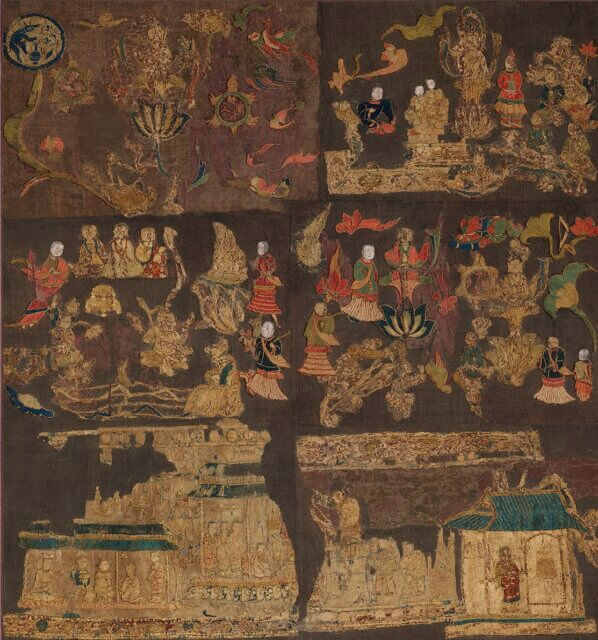
The Tenjukoku Embroidery is the oldest embroidery relic in Japan, created in the 7th century during the Asuka period, and is currently in possession of the Chūgū-ji Temple in Ikaruga Town, Nara Prefecture.
This craftwork, made by Princess Tachibana no Ōiratsume, the consort, in mourning for the death of Prince Shōtoku, signifies “a hanging scroll depicting the state of Tenjukoku, where Prince Shōtoku was believed to have passed away into the next life.”
The Tenjukoku Embroidery is speculated to represent the Western Pure Land of Ultimate Bliss, where Amitabha Buddha resides.
Originally, it was made up of two scrolls, each measuring 2 meters in height and 4 meters in width, connected side by side. However, only fragments remain today, which are framed and measure 88.8 centimeters in height and 82.7 centimeters in width.
The embroidery features inscriptions of four characters each, and it is estimated that the original scroll had 400 characters embroidered on it.
The inscriptions include the following contents:
- The death of Prince Shōtoku’s mother and Prince Shōtoku himself.
- An inference from the Prince’s words during his lifetime that he would have been reborn in the Tenjukoku.
- The wish of Prince Shōtoku’s consort, Princess Tachibana no Ōiratsume, to visually depict the state of that realm, leading to the creation of this piece.
The Tenjukoku Embroidery plays a significant role in the ancient Buddhist art of Japan.

